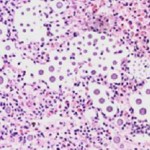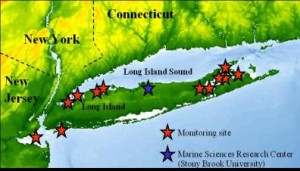QPX monitoring in New York State waters

The protistan pathogen known as Quahog Parasite Unknown (QPX) emerged as a serious threat to New York’s hard clam (Mercenaria mercenaria) fishery in 2002. In an effort to protect wild hard clams in Peconic Bay, the Raritan Bay Shellfish Transplant program (which had accounted for almost half of New York’s hard clam production) was discontinued in 2002. The transplant program has been partially reinstated in June 2005, and its management will require continued intensive monitoring of QPX in New York hard clams.

The surveillance of clams from areas open to the fishery is performed, and the evolution and trends in disease prevalence in various locations throughout the Marine District are determined. This continued extensive monitoring of hard clams from open and closed areas will take into account the temporary and spatial changes in QPX prevalence demonstrated in previous monitoring conducted by the MADL. In this framework, a combination of traditional and our newly-developed detection tools are used the detection and quantification of QPX in clams and in environmental samples.